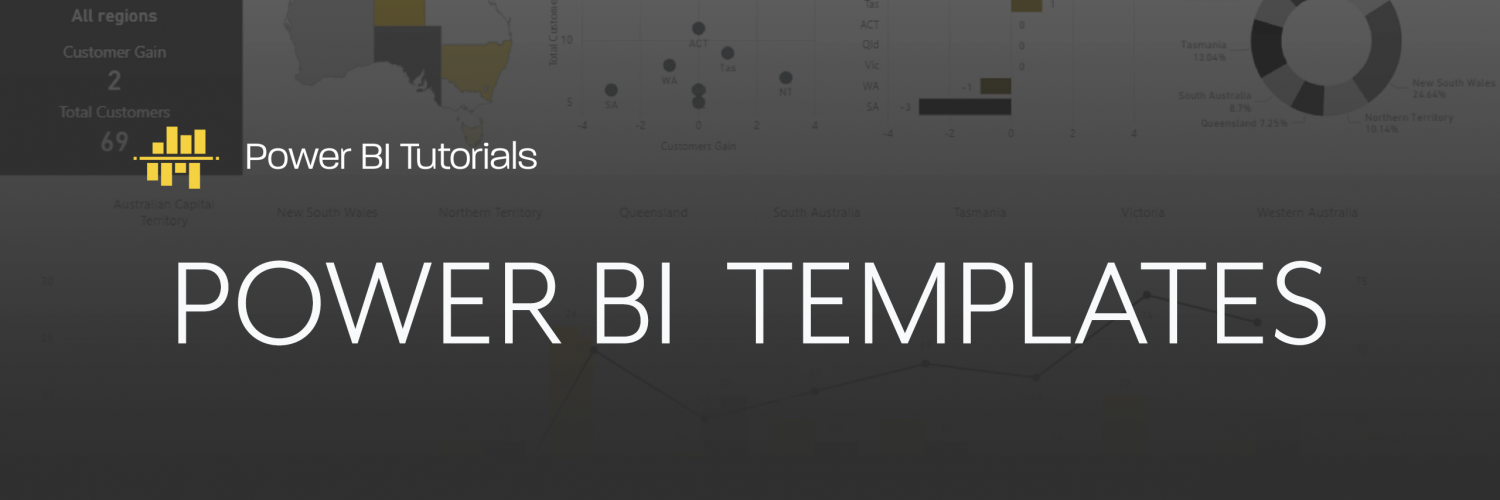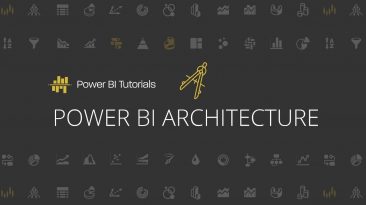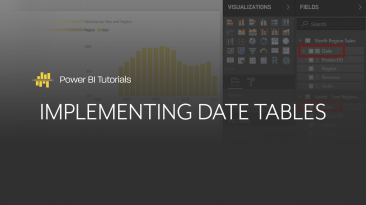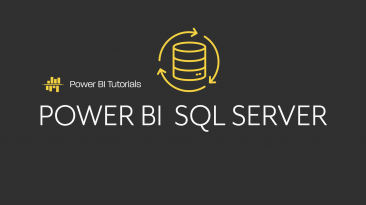Power BI Templates are a huge topic, partially because different people will give you different definitions of what they consider to be a Power BI template. A Power BI Developer would say that a Power BI template is a Power BI file which contains all meta-data for a report but doesn’t contain the data itself. Then, the developer could add that you can also use theme templates in Power BI to apply colour schemes to your Power BI reports.
On the other hand, a Power BI business user would say that a Power BI template is an example of a Power BI application. An example of a report which you might use to start not from scratch when trying to think of a sales or financial forecast dashboard. You can change, improve and tailor such a template to the needs of your business.
Below, we will discuss all the 3 definitions of Power BI templates.
Creating Templates in Power BI Desktop
Firstly, let’s consider Power BI template files from a BI developer perspective. We will go through a short tutorial to explain the concept. To follow the steps below, you may use any of your Power BI Desktop files. A better choice would be a file which uses parameters, or a file connected to an SQL data source. You may also use the file attached to this article: “AdventureWorks.pbix”. This file has one data source connected to a popular Microsoft SQL Server database “Adventure Works” which is often used for demo purposes.
Before we start, please look attentively at the tab “Report” in Power BI Desktop:
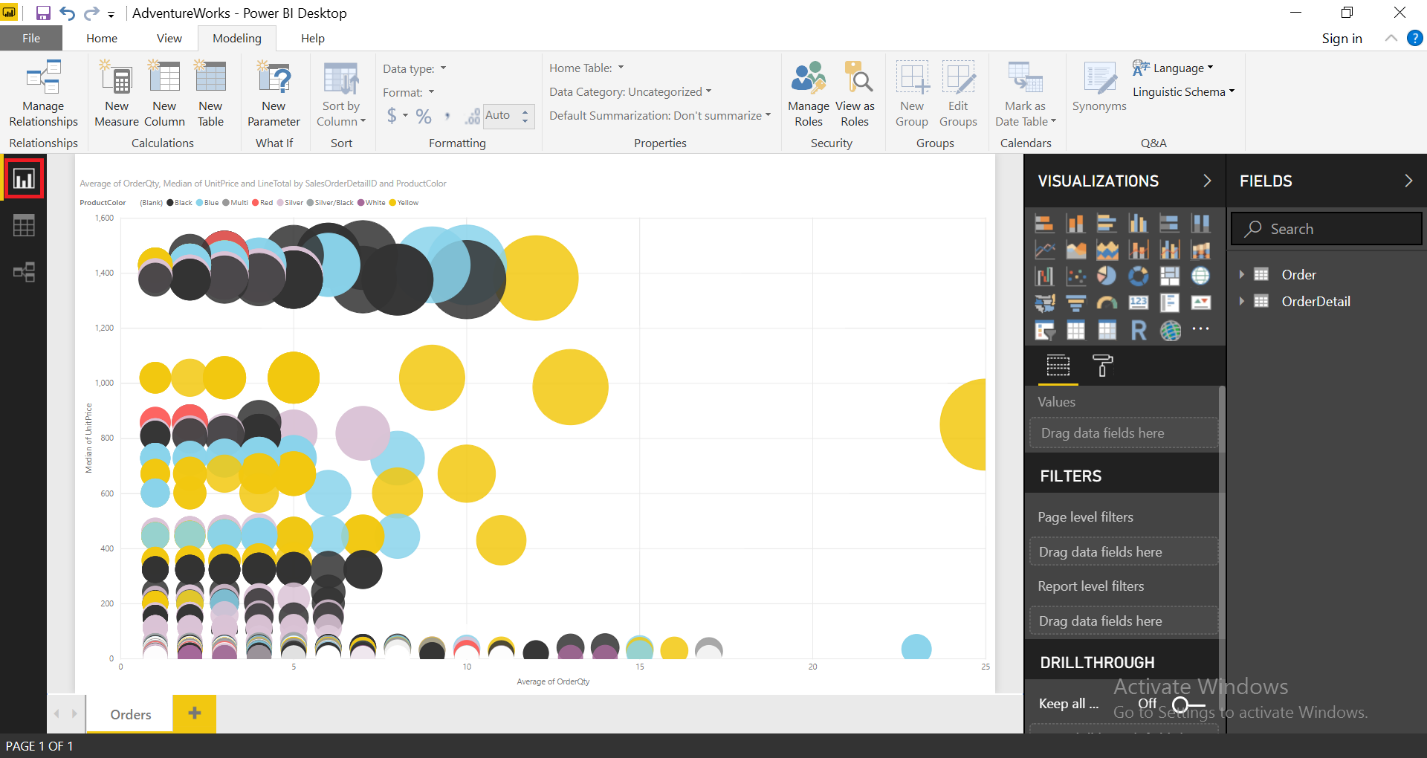
The tab contains some visuals which you may have created before. In my case, it is only one scatter plot.
Then, go to the “Data” tab and note that your tables contain some data:
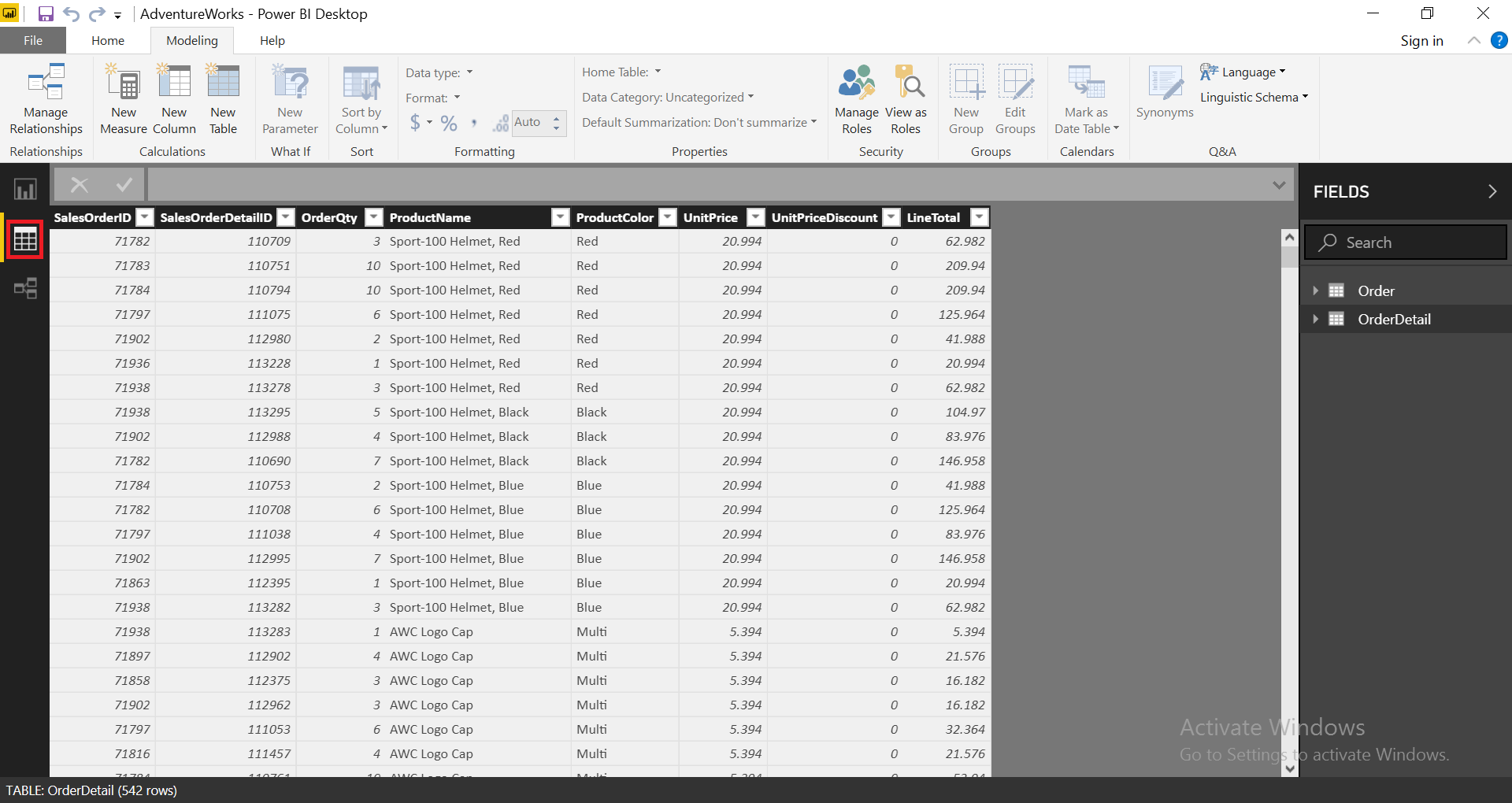
Now, we will create a template file. To create a Power BI template file in Power BI Desktop, please, go to “File” –> “Save As”:
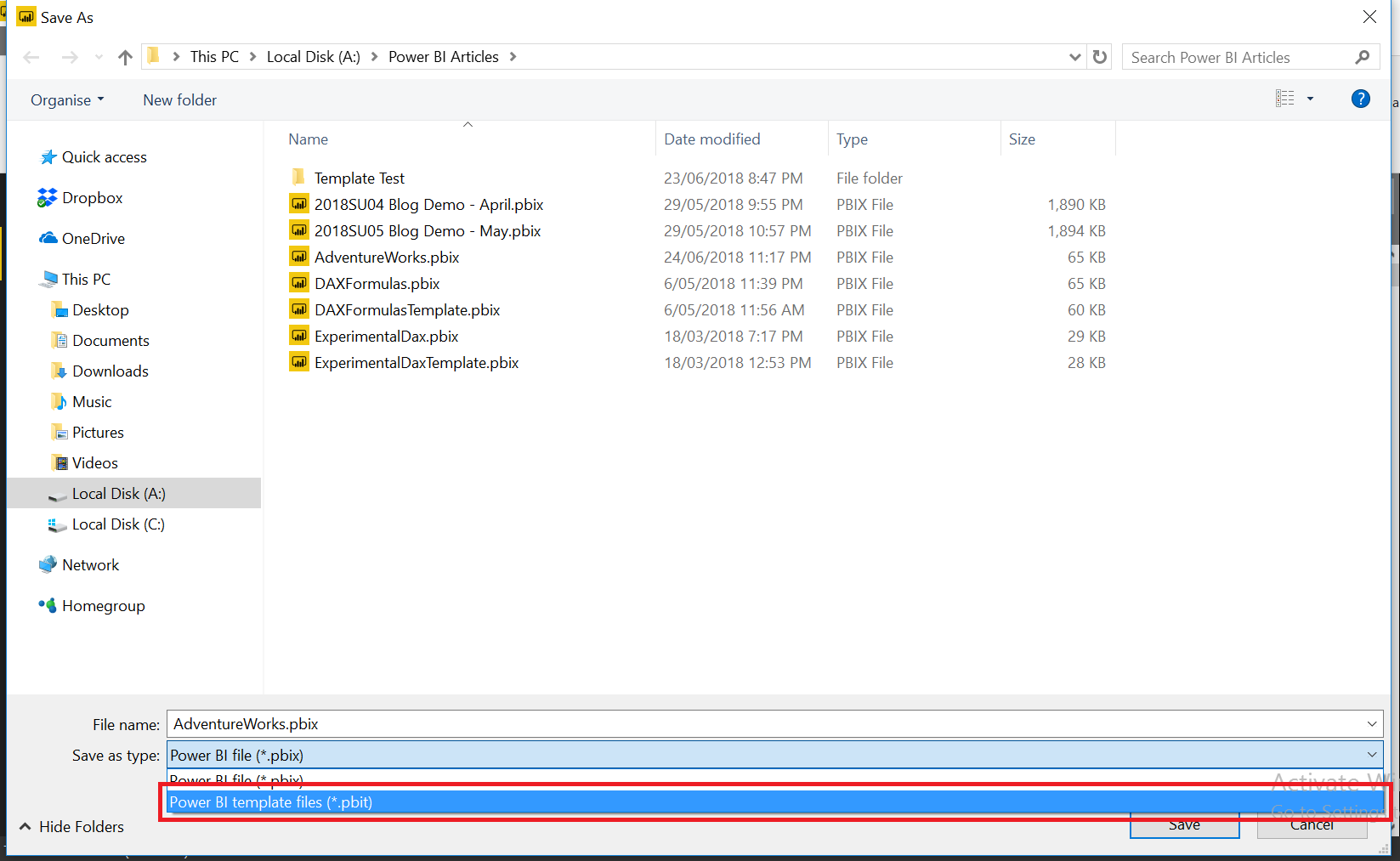
Enter the name of the file, choose the same location where you store the original file and click “Save”. In my case, I kept the file name “AdventureWorks” as I knew that the new file would have a different file extension, so the full file name which consisted from the visible name and the file extension would finally be different.
If you look at the files in your location directory, you will see that they have different file extensions:

The newly created file has the “pbit” extension which stands for “Power BI Template”. An original Power BI workbook has an extension of “pbix”. If you do not see the file extensions, in Windows 10, go to Control Panel -> Appearance and Personalization -> File Explorer Option -> View tab -> Advance Settings -> Hide extensions for known file types. The path is similar for other versions of Windows. For Mac OS, you may Google the way to show the file extensions.
Now, please, close your Power BI Desktop and reopen it again. Then, choose “Open other reports”:
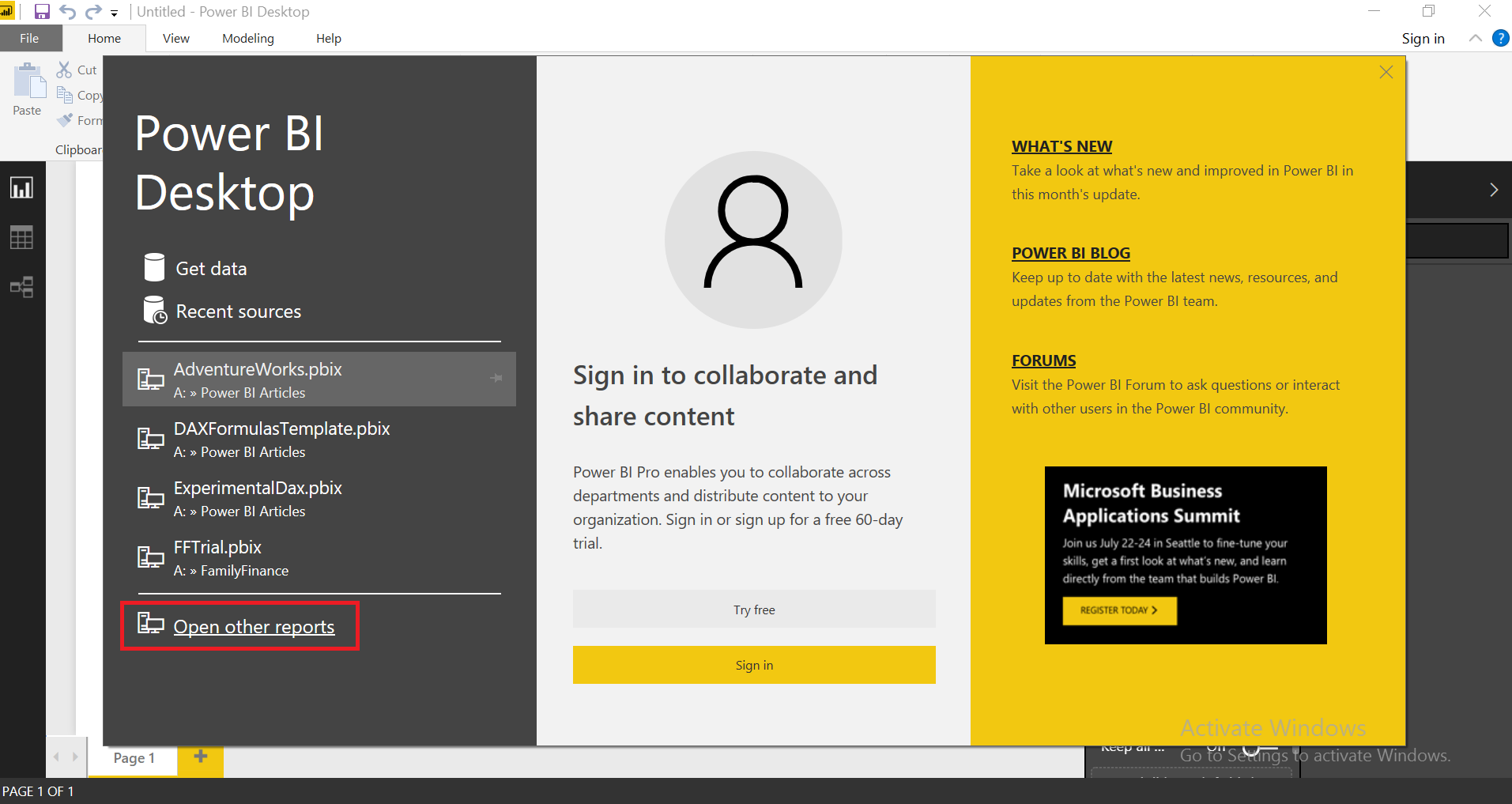
If you navigate to the location where you have just saved the template file and choose the file type “Power BI template files” in the bottom-right corner:
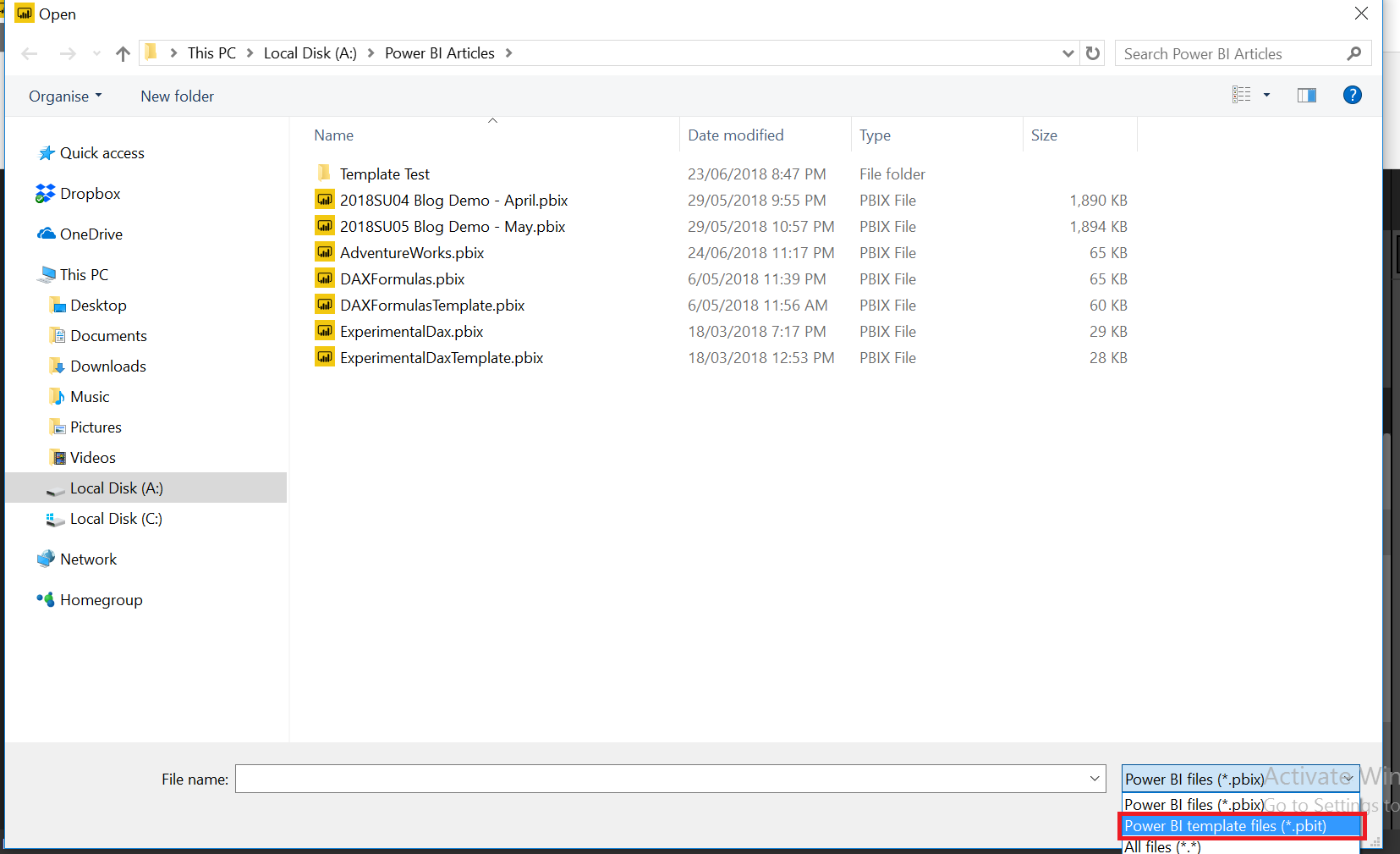
you will see your template file:
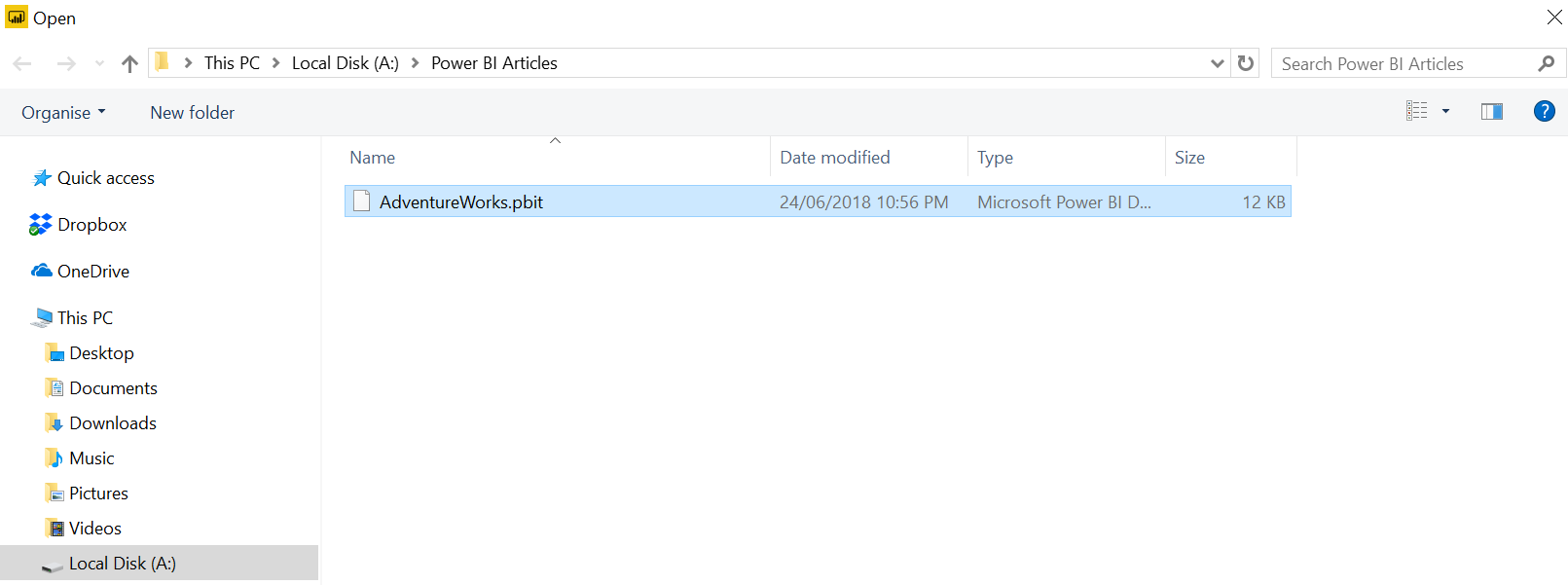
Please, open it.
You will see that you must enter database credentials (in case you use a data source with an authentication) to connect to data:
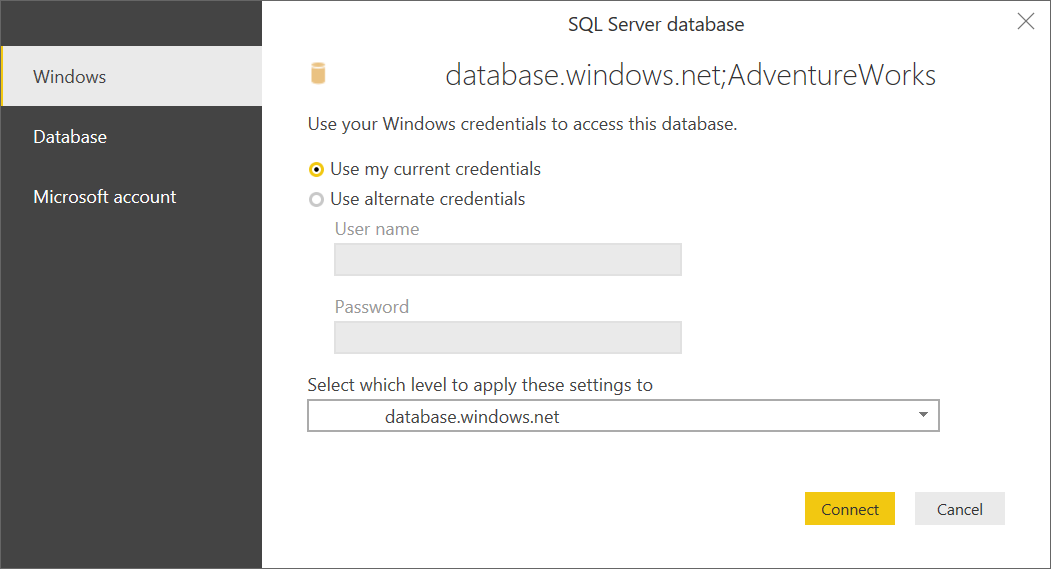
If you do not know the credentials, you will have to click “cancel” as it is the only way to continue viewing the file:
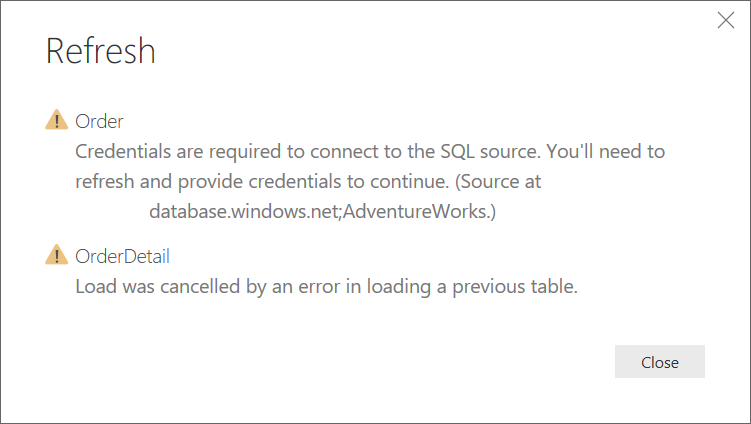
The message above shows that you cannot connect to the data source associated with this template file.
Let’s click on “close” and check what it means for us:
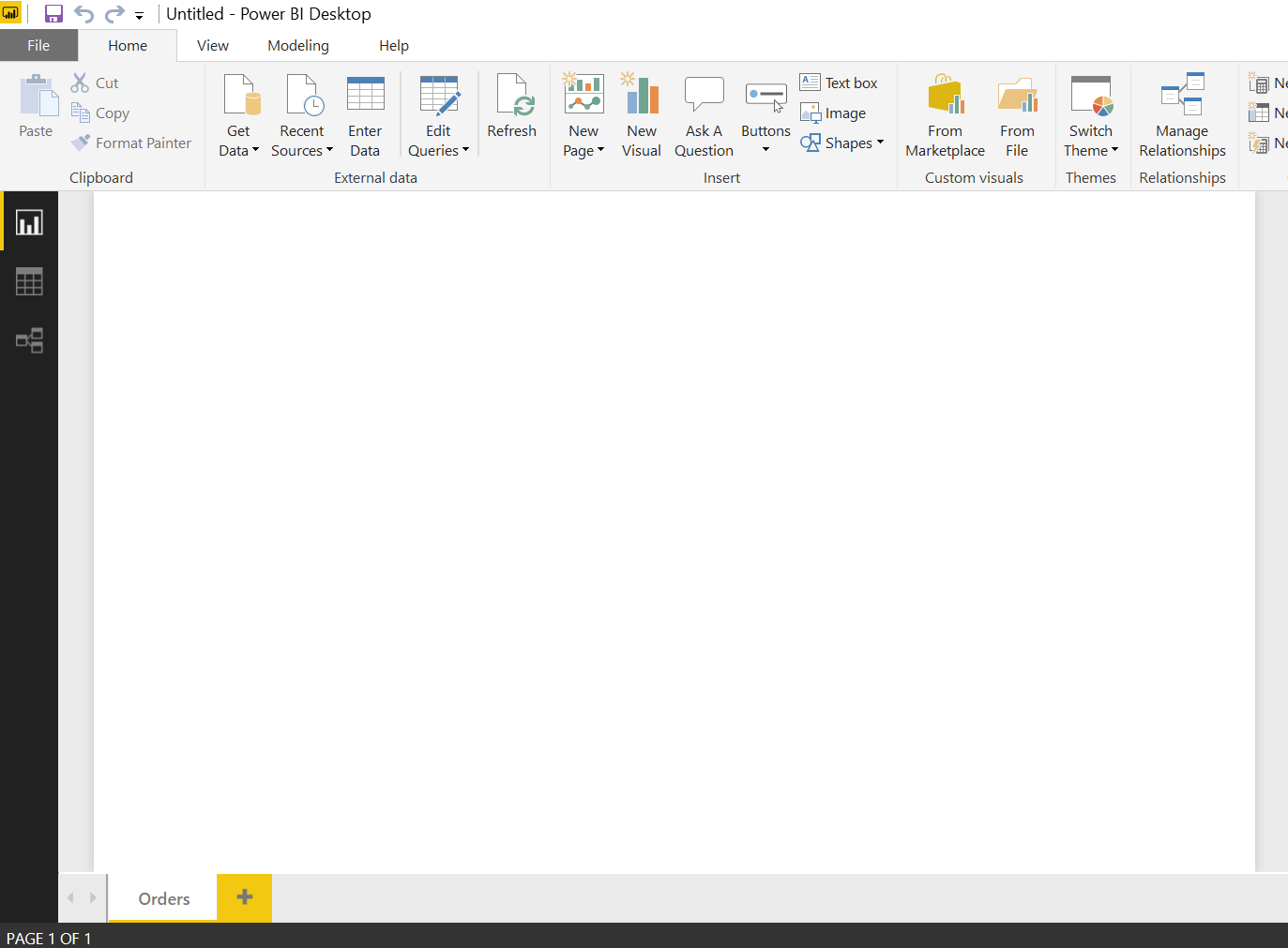
We do not see any data on the canvas. Let’s also check the data tab:
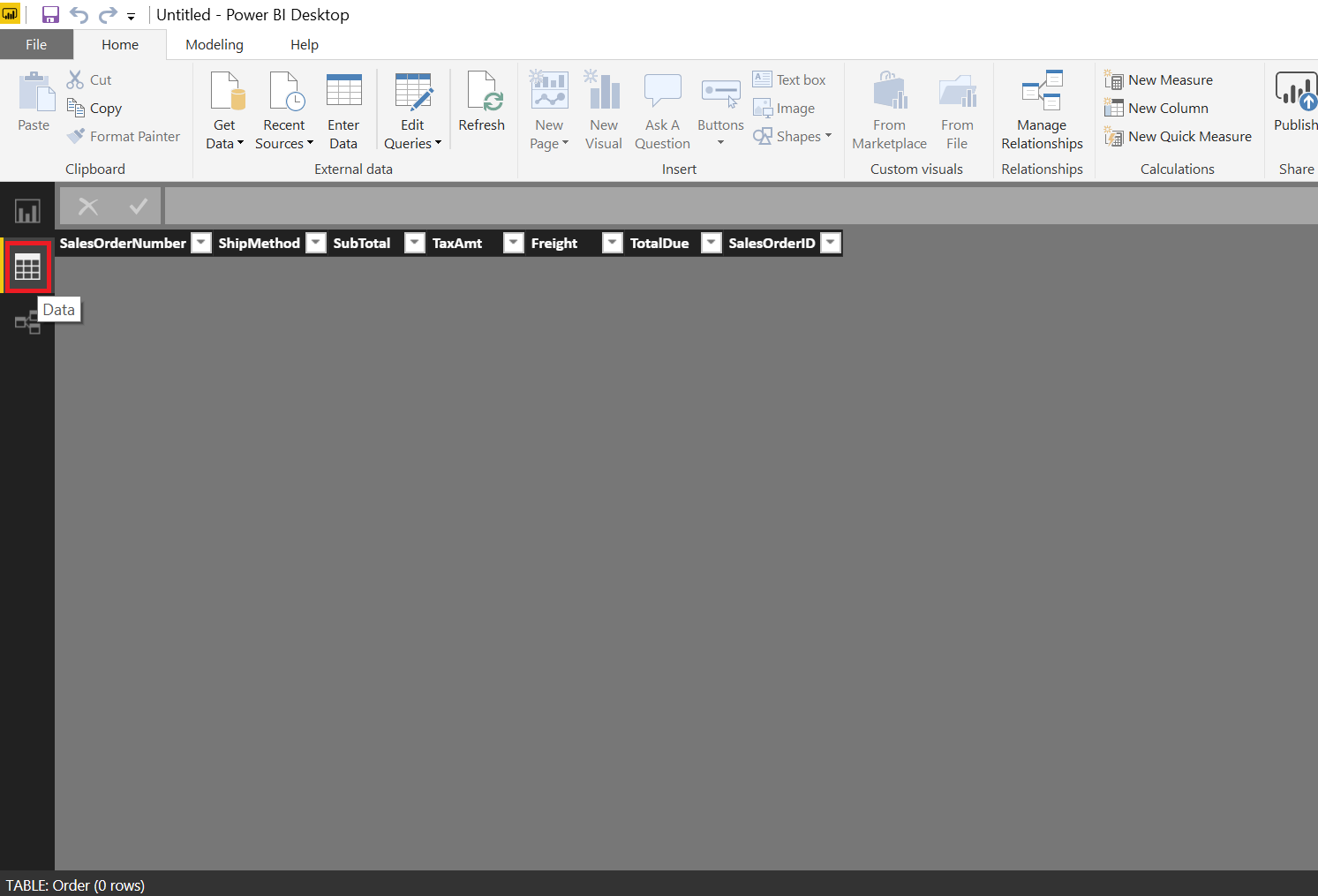
And there’s no data on this tab as well.
If you look at the very first screenshots that we made for these tabs of the original “pbix” file you will see that they contained data. Data is the key distinction between a standard Power BI file and a Power BI Template file: in a Power BI file, the imported data goes as a part of the data model, whereas in a Power BI template file you have only the report definitions and the data model description rather than the data itself.
Why Create Templates in Power BI Desktop?
One of the major reasons for sharing such a file without data is security: if you are unsure about who can access the file, it is a good practice to share it without data. In this case, only the users with an authorized access to the data source will be able to view the reports.
Another scenario of using Power BI templates is when you want a user to enter parameters in the file each time he or she launches the report. This might be useful if you have one file connected to several databases each having exactly the same data structure. In this case, you’d like users to enter the database name before viewing the report content: if they enter the database name before viewing the reports, they will keep in mind what data source they will be using.
One more reason for saving files in a Power BI Template format is their size – having only metadata associated with the file, the “pbit” file has a smaller size than the “pbix” file:

And there is also an explicit confirmation for this. Not many Power BI users know about the trick I am going to showcase you now. Please, copy both files to a separate folder and change the file name of the template file to “AdventureWorksTemplate.pbit”:

and then, the extensions of both files from “pbix” / “pbit” to “zip”:

“Zip” is one of the most popular file extensions for the archived files.
Now, double click on both files to open them:
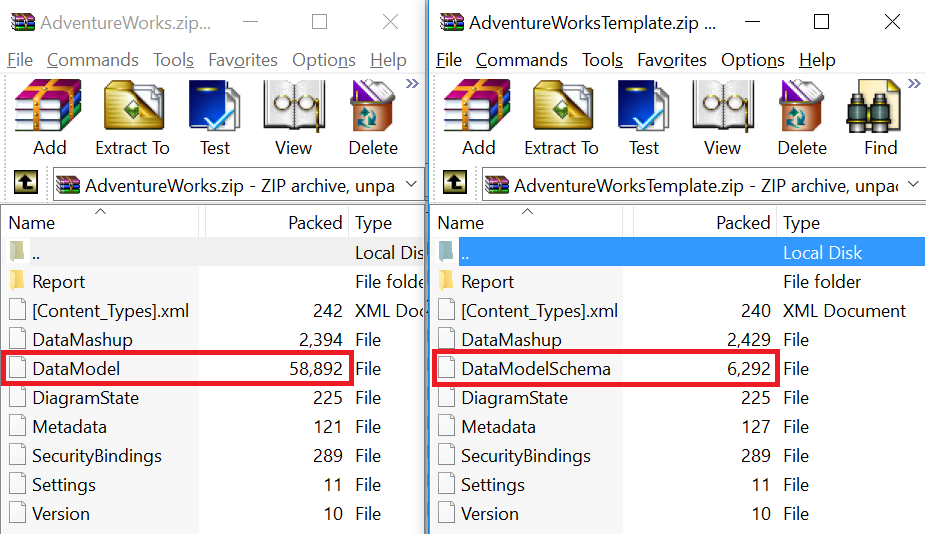
The most amazing thing here is that each power bi file is actually an archived collection of files rather than an individual binary file. Then, you may notice that the standard Power BI file contains a file “DataModel” which is 10 times bigger than the file “DataModelSchema”, a part of the template file. It is natural owing to pbix-file storing all the data for the report while “pbit” having only metadata for reports.
Power BI Theme Templates
A completely different concept of using templates in Power BI is applying colour themes to your reports. The Power BI Community portal contains a whole gallery of themes which you can access via the following link: http://community.powerbi.com/t5/Themes-Gallery/bd-p/ThemesGallery
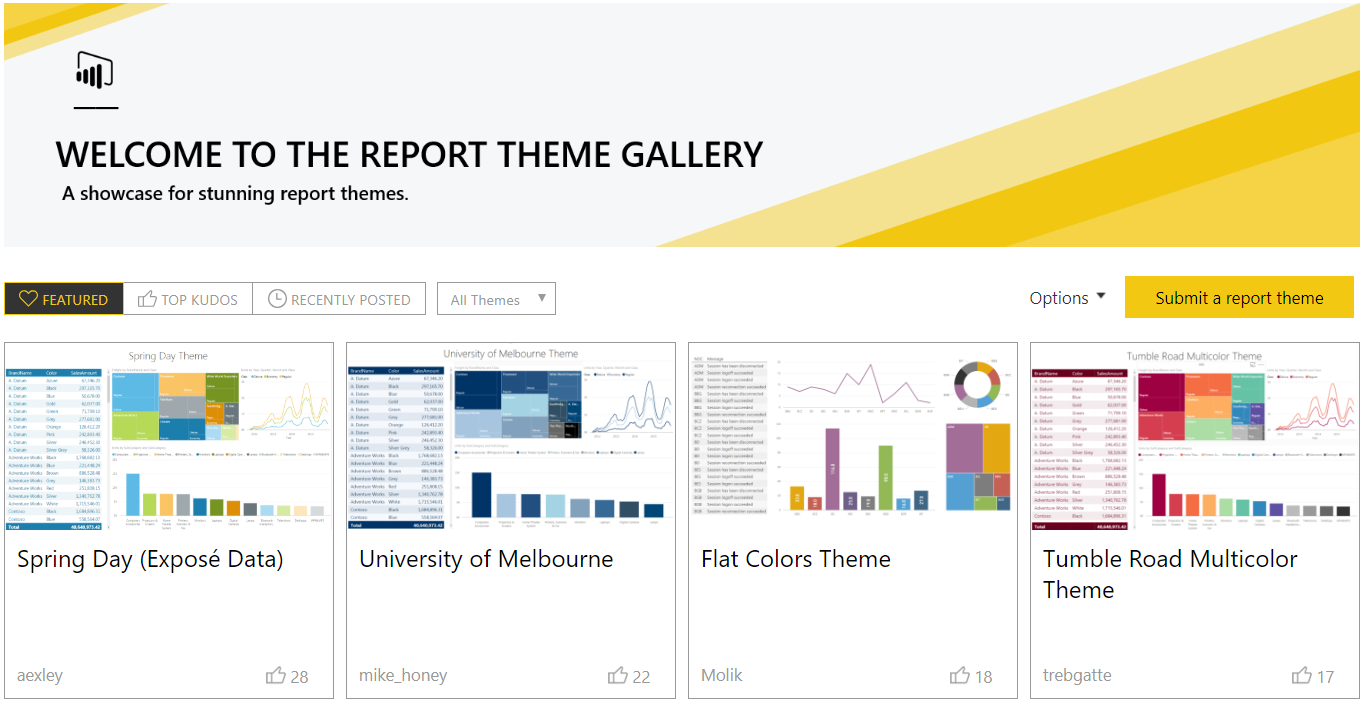
Please, click on any theme from the gallery:
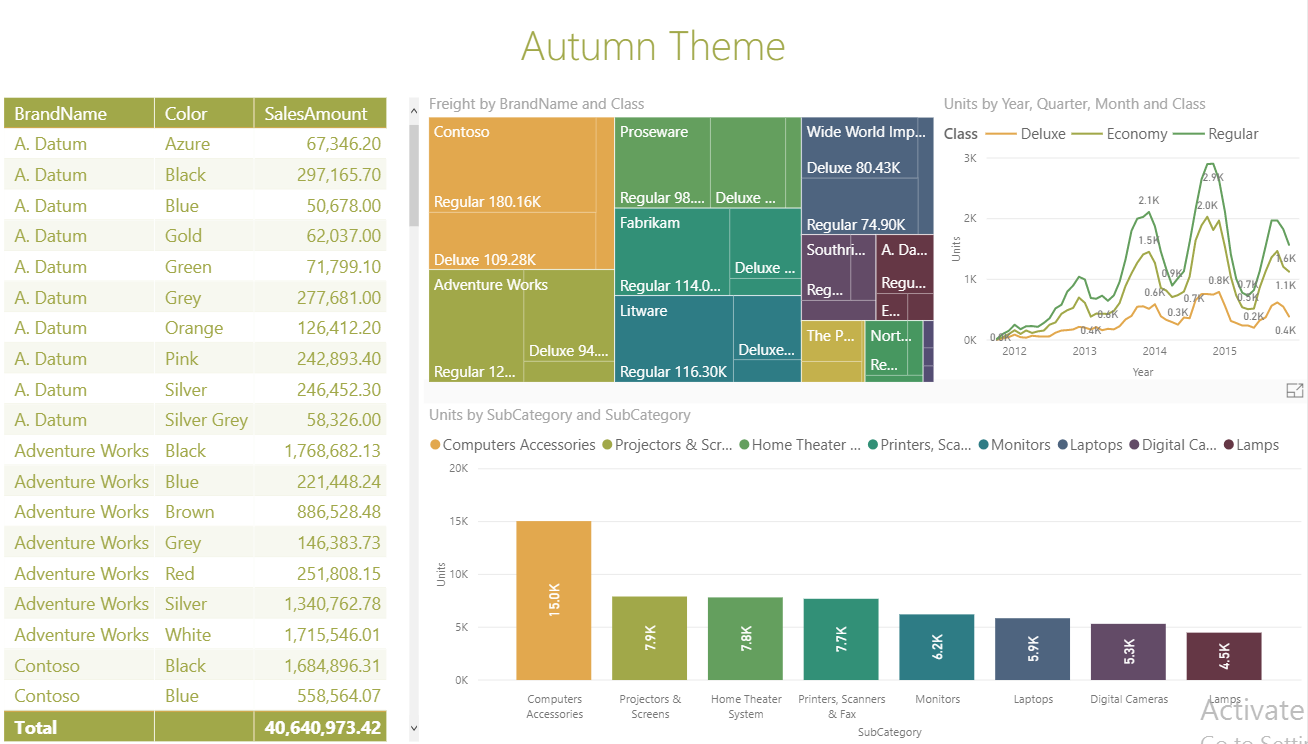
You will be navigated to the example interactive report where you can play around before finally choosing a theme for your report. Scroll down a little bit and click on the icon near the “JSON” file to download it:
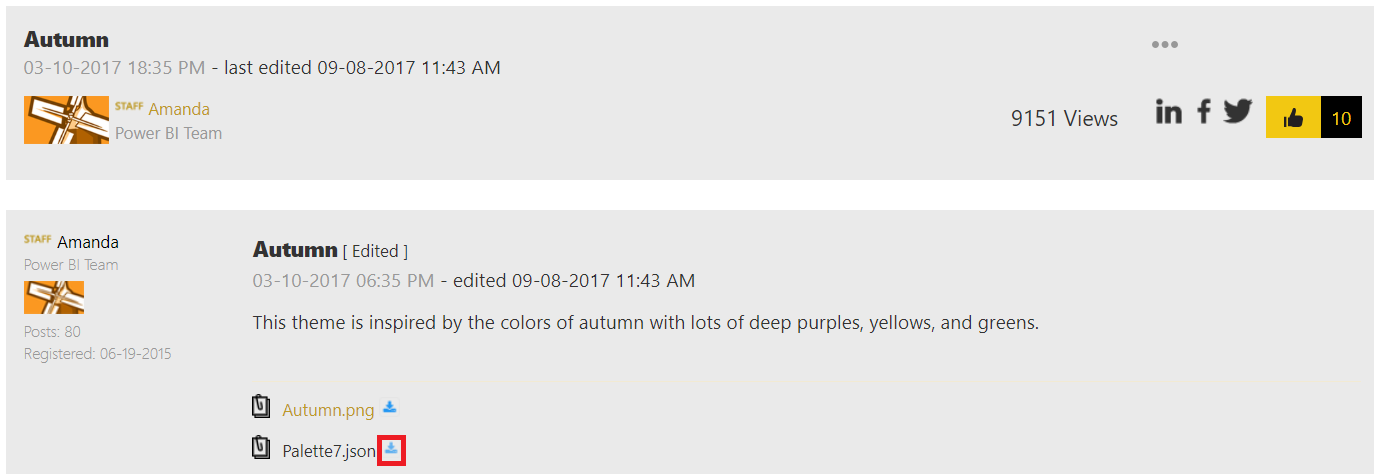
Now, please close your Power BI Desktop and open it again, then choose the original “AdventureWorks.pbix” file coming with this tutorial:
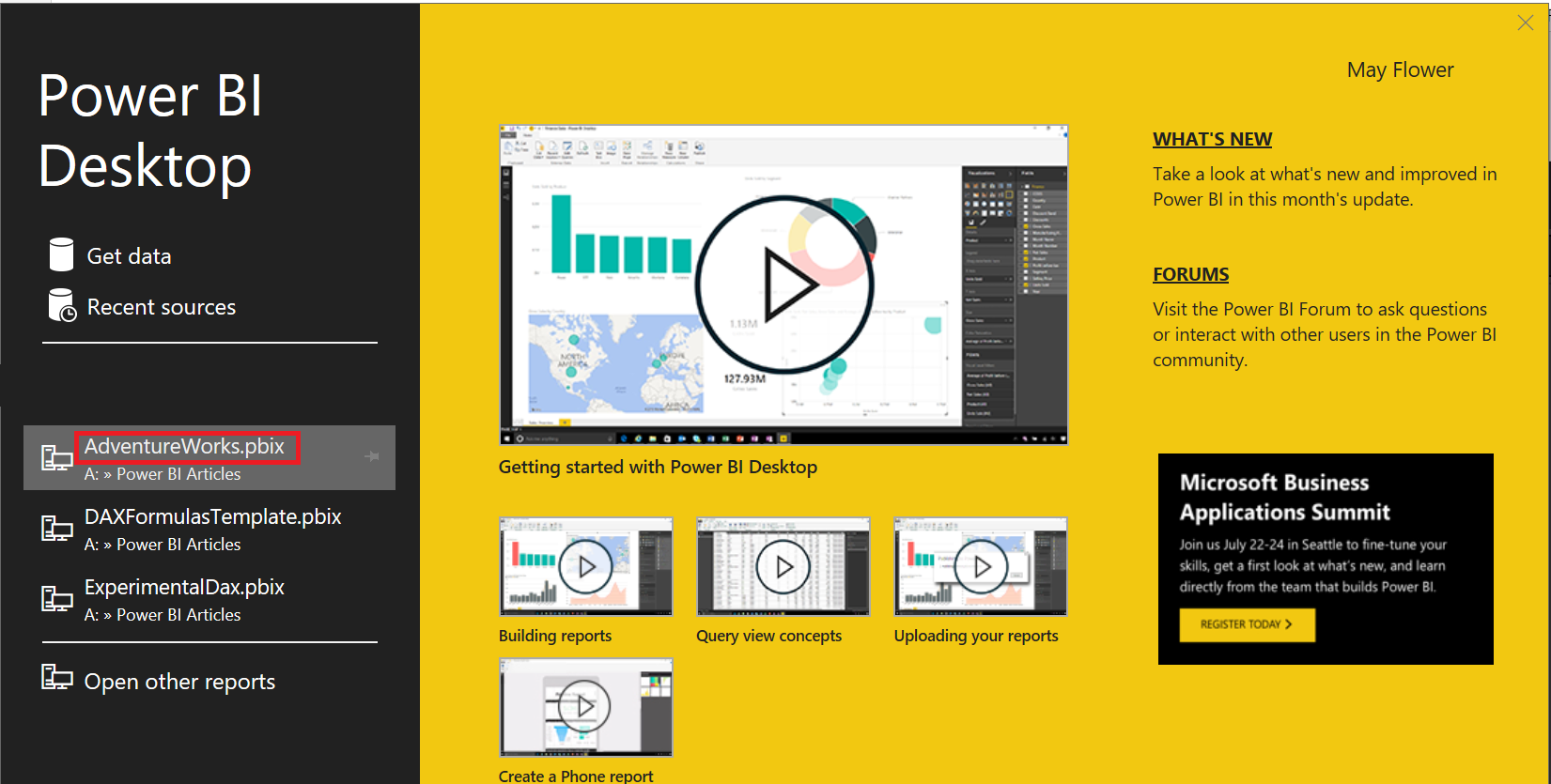
Click on the “new page” on the bottom:

Then, create a couple of simple visuals on the canvas. For a better color representation, it would be good to bring some categories under the “legend” placeholder of a visual:
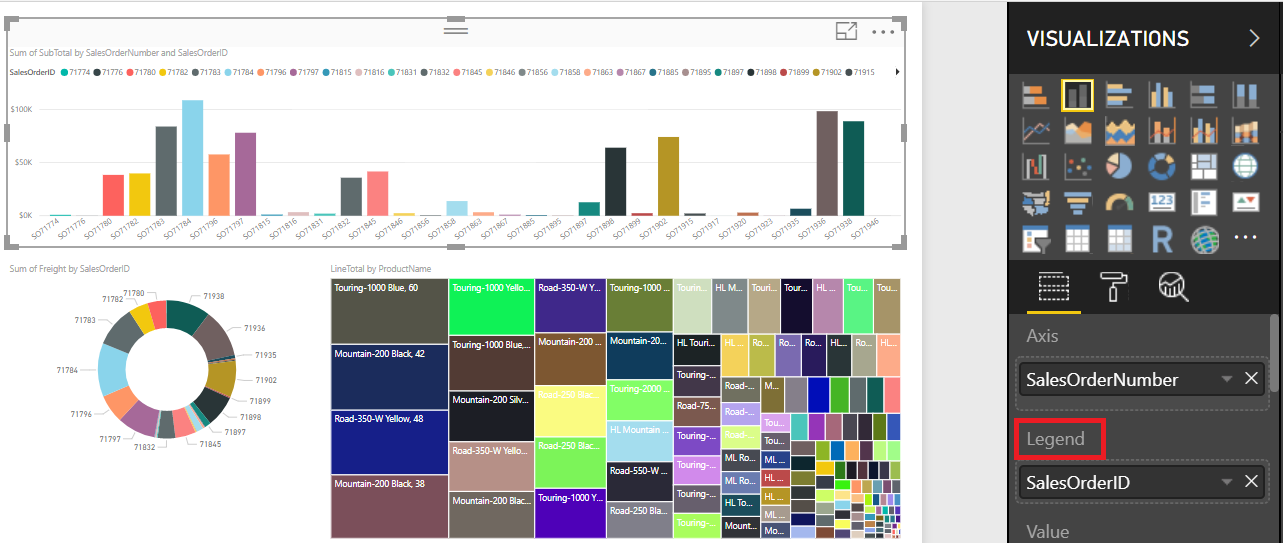
Now, please go to the “File” -> “Options and Settings” -> “Options”:
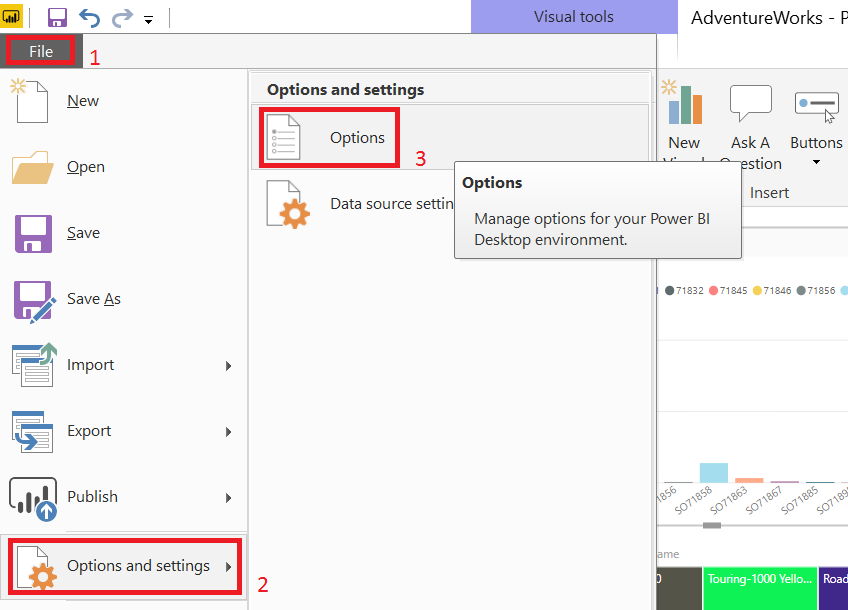
On the “Preview features” tab, click the “Custom report themes” checkbox:
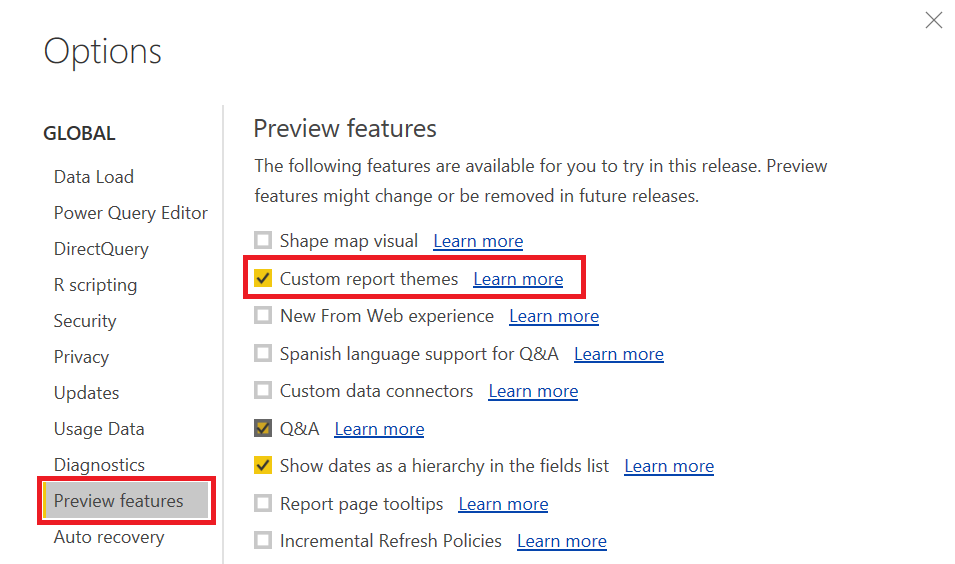
Close the “Options” window. For the changes to take place, you will need to restart your Power BI Desktop. Please, do not forget to save your file before restarting.
Once restarted, click on the “Switch themes” button on the main ribbon and choose “import theme”:

Then, open the “JSON” file you’ve downloaded from the Power BI Theme Gallery webpage:

Boom! You’ll see that all your visuals will have changed their color schemes in your Power BI report:
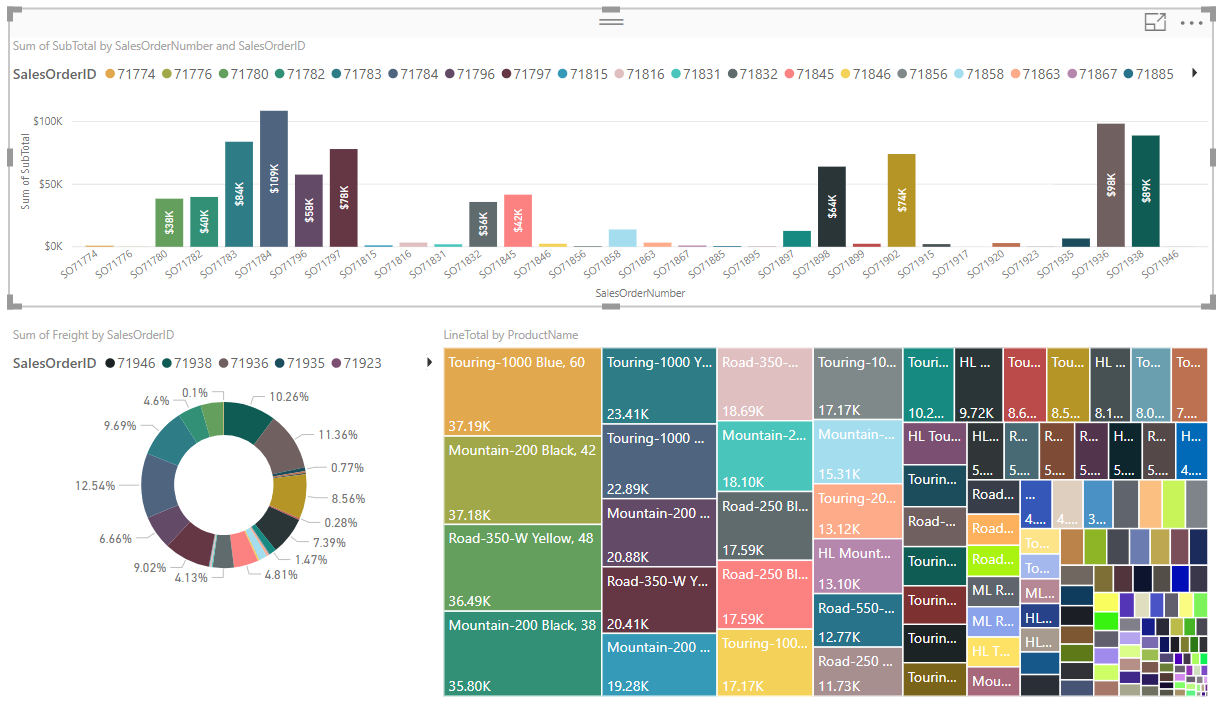
You may switch back to a default theme at any time by clicking on “default theme”:

This is a very powerful feature of Power BI: by choosing a theme, you may adopt your Power BI reports to your corporate colours quickly and easily.
Power BI Example Reports AKA Templates
Finally, let’s consider what could be a Power BI template from a business user’s point of view. When you start creating a new report, you might want to search for inspiration by looking at reports created by experienced Power BI users. In this case, Power BI Data Stories Gallery comes to help: http://community.powerbi.com/t5/Data-Stories-Gallery/bd-p/DataStoriesGallery
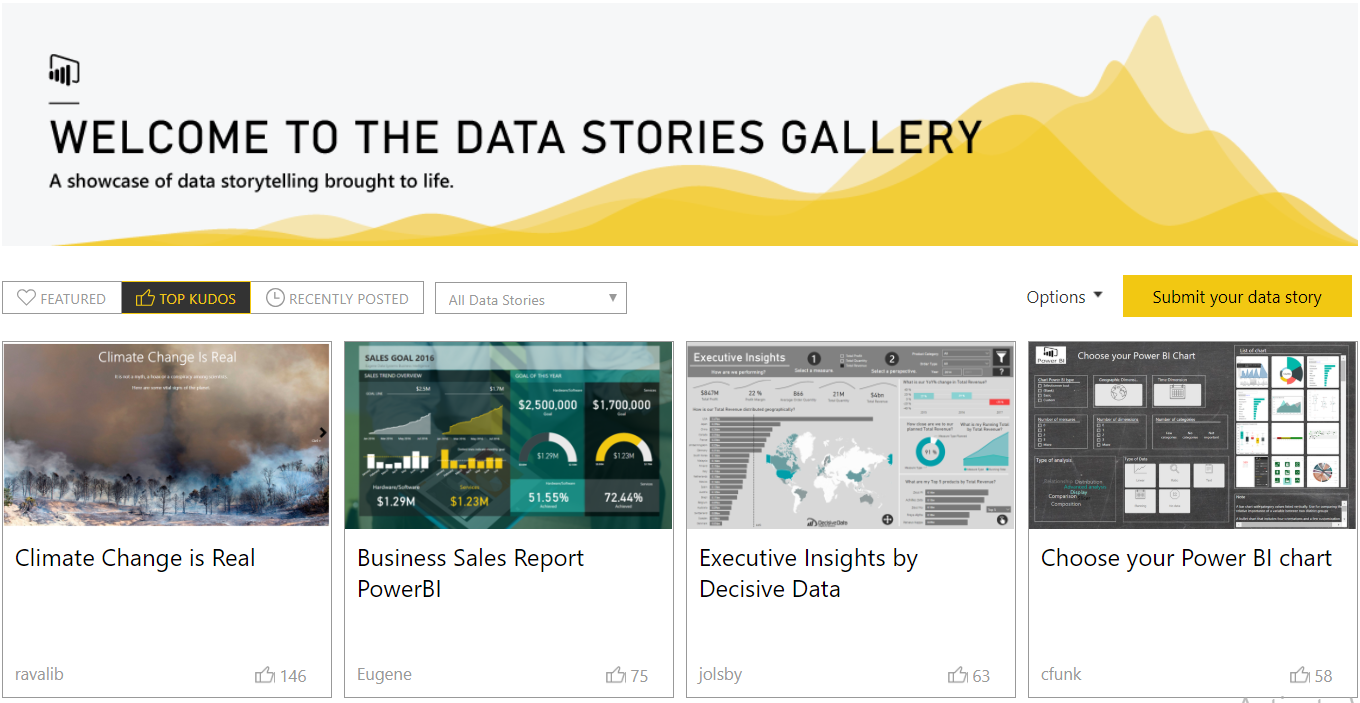
You will find all the standard reports and a plenty of creative ones there. For instance, you might have a look at Product Sales Scenarios or a P&L report:
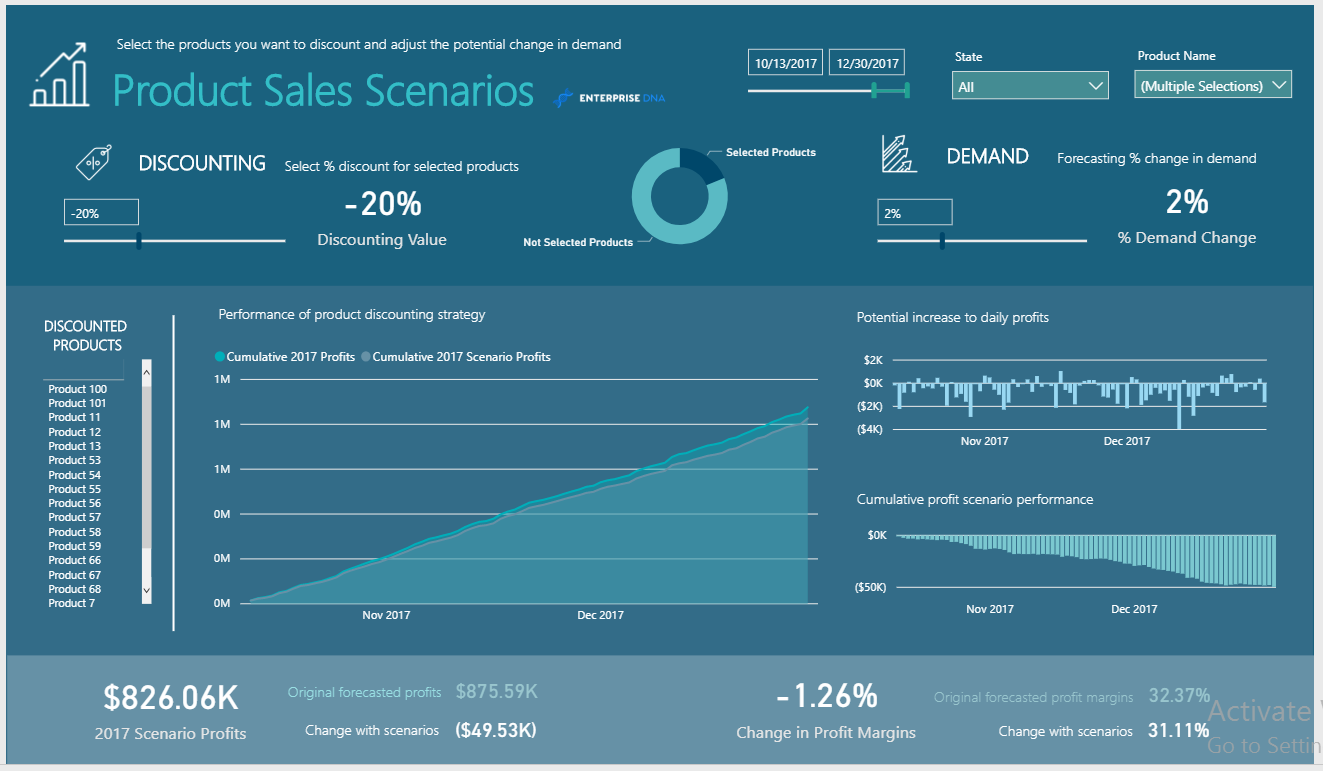
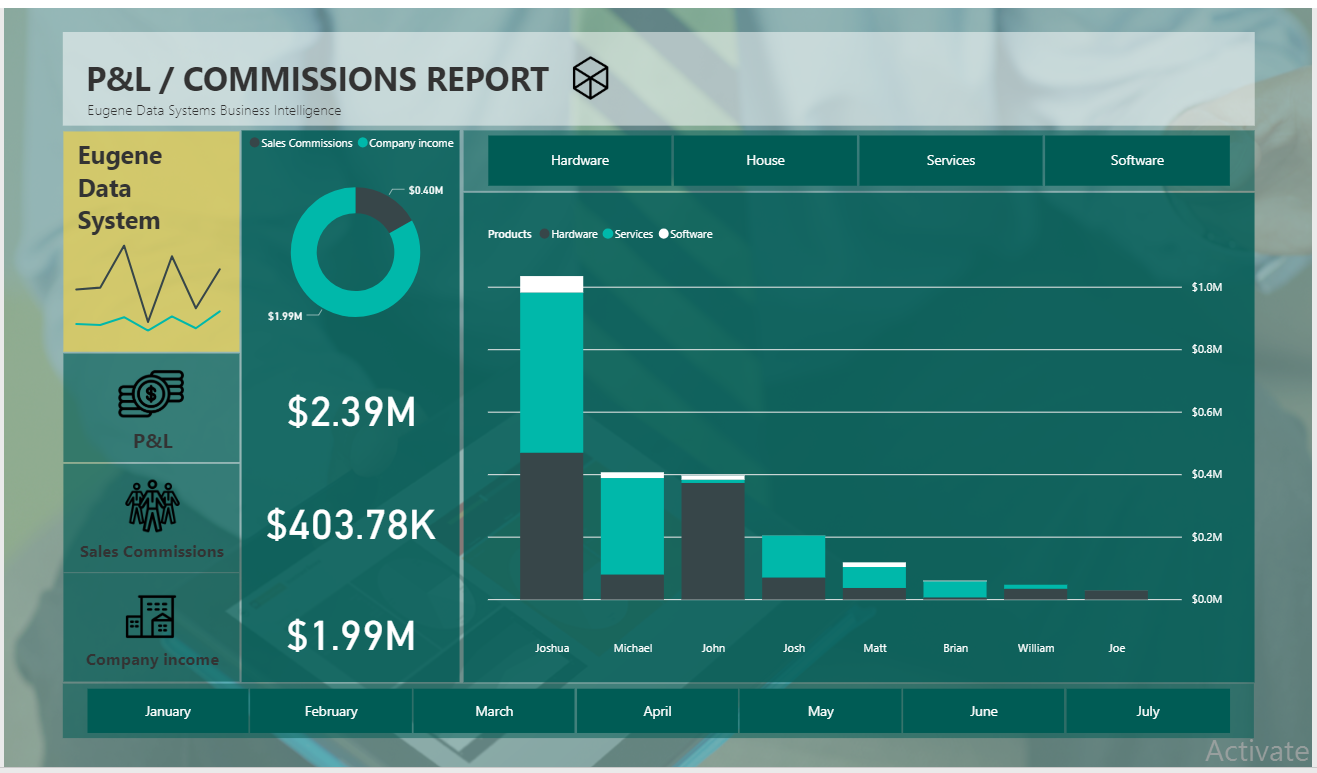
Or, if you are interested in the client analysis, you should check out this one:
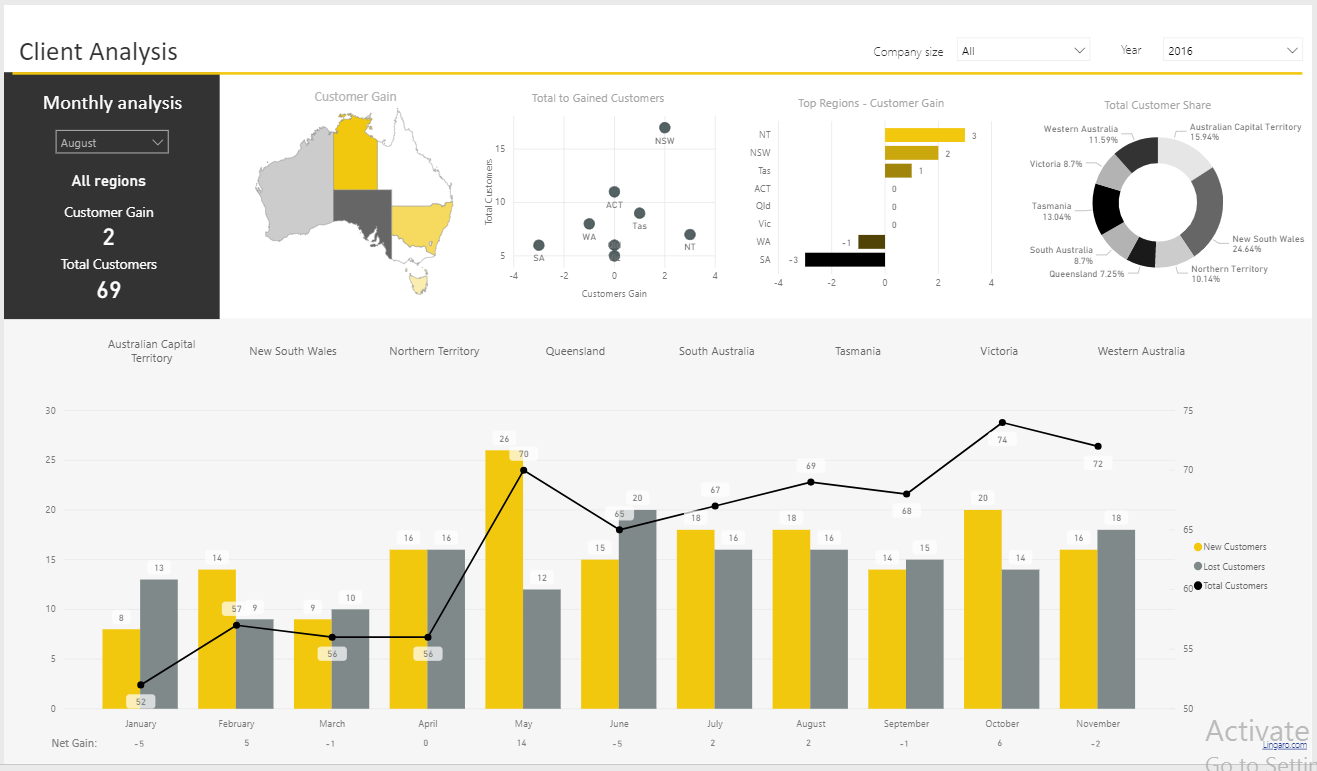
Of course, all those examples look perfect and have required a lot of effort for their creation. Nevertheless, they may give you an idea of what visual type would be good in your business case, or what numbers/dimensions you are missing in your analysis.
Conclusion
To sum up, we have considered the 3 definitions for Power BI templates most commonly met in a Power BI world. While, officially, a Power BI template is only a Power BI report without data, some users would say that Power BI colour themes and example reports are also examples of templates in Power BI. It is for you to choose what kind of templates are useful for your day-to-day work.
References
EnterpriseDNA. (2017). Product Discounting Sales Scenarios – ‘What If’ analysis. Retrieved from https://community.powerbi.com/t5/Data-Stories-Gallery/Product-Discounting-Sales-Scenarios-What-If-analysis/m-p/237514
Eugene. (2016). Profit and Loss Report. Retrieved from https://community.powerbi.com/t5/Data-Stories-Gallery/Profit-and-Loss-Report/m-p/52252
Microsoft. (2017). Autumn. Retrieved from https://community.powerbi.com/t5/Themes-Gallery/Autumn/m-p/140746
Rafalk. (2017). Client Gain and Income Analysis. Retrieved from https://community.powerbi.com/t5/Data-Stories-Gallery/Client-Gain-and-Income-Analysis/m-p/263391


